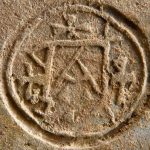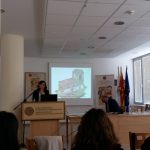
“Byzantium – Bridge Between Worlds”
Due to its remarkably long duration, territorial expanse, geographical situation and complex cultural traditions, Byzantium acted as a temporal and spatial bridge connecting different periods, geographical areas, and cultures. Byzantium acted as a transition between ancient, medieval and early modern worlds around the Mediterranean basin, Eurasia and the Near East through reception, appropriation, and innovation. It connected different geographical and cultural spaces through political, economic, material, and cultural networks in many of which it constituted an important node. Centering on the key theme of “Byzantium – Bridge between Worlds,” the 24th International Congress of Byzantine Studies aims to explore this connecting and mediatory role of Byzantium. It also hopes to initiate proposals on bridging interdisciplinary gaps within Byzantine studies and strengthening dialogue with other relevant fields.
Thematic Free Communications
(Selected from the RT proposals sent by National Committees)
Australasia
1. Embodied Mystagogy: Liturgy, Materiality and the Senses
Convenor: Ken Parry
2. The Byzantine Balkans: A Bridge to the West and North
Convenor: Amelia Brown
Austria
3. Byzantine poetry between fictionality and factuality
Convenors: Krystina Kubina and Nikos Zagklas
Former Yugoslav Republic of Macedonia
4. Church Slavonic Literacy as Communication between East and West
Convenor: Emilija Crvenkovska
5. Macedonia and the Balkans – The Area of Interaction Between the Slavic World and
Byzantium (IX-XIV Century)
Convenor: Vitomir Mitevski
France
6. Les icônes dans les collections muséales d’Europe occidentale
Convenor: Raphaëlle Ziadé
7. Mediterranean Migrations in the 7th-9th Centuries: Near East/Africa/Italy
Convenors: Filippo Ronconi and Marek Jankowiak
8. La prosopographie au coeur des relations entre Byzance et ses voisins
Convenors: Vivien Prigent and Vincent Puech
9. Mobilités, fonctionnaires de l’état et hommes d’église dans l’Empire byzantin
Convenors: Sophie Métivier and Luisa Andriollo
10. Le developpement des savoirs scientifiques et techniques à Byzance
Convenors: Stavros Lazaris and Ines Pérez Martin
11. La Notitia Dignitatum: émission, diffusion, réception
Convenors: Sylvain Janniard and Dominic Moreau
12. Faut-il, peut-on « decoloniser » l’histoire byzantine ?
Convenors: Nicolas Drocourt and Annick Peters-Custot
Germany
13. Connecting the Euromediterranean Cultures Through Venice
Convenors: Armin Bergmeier and Sabine Feist
Great Britain
14. The Notion of Time in Byzantium
Convenor: Elena Ene Draghici-Vasilescu
15. The Epigraphies of Constantinople: Later Byzantium and the Early Ottoman Period
Convenor: Ida Toth
16. Beauty of Cities and the Beauty of the Empire
Convenor: Foteini Spingou
Greece
17. Eastern Macedonia from the Ancient World to Medieval Realities. Exploring Patterns
and Particularities
Convenor: Natalia Poulou
Israel
18. Center and Periphery. New Byzantine Studies in Israel (Palaestina Byzantina I)
Convenor: Joseph Patrich
19. Center and Periphery. New Byzantine Studies in Israel (Palaestina Byzantina II)
Convenor: Joseph Patrich
Italy
20. From Byzantium to the West (and vice versa): ‘instrumental’ translations between
the Middle Ages and Humanism
Convenors: Antonio Rollo and Niccolò Zorzi
Norway
21. Creating (Byzantine) Digital Communities
Convenor: Staffan Wahlgren
Poland
22. Encounters with the Alien. Religious and Anti-Heretical Polemic in the Byzantine
Commonwealth
Convenor: Georgi Minczew
23. Broken bridge – War and Warfare during the Early and Middle Byzantine period
Convenors: Kirił Marinow, Łukasz Różycki, and Marcin Böhm
24. State Administration in the Early Byzantine Period (AD 284–641). Between Greek,
Roman and Christian models of government
Convenors: Paweł Filipczak and Jacek Wiewiorowski
Romania
25. Theories of Prayer in Early and Middle Byzantium
Convenors: Brouria Bitton-Ashkelony and Andrei Timotin
Russia
26. Recreation of Byzantine Sacred Spaces: Iconography and Hierotopy
Convenor: Alexei Lidov
27. Turks and Other Asians in Byzantine Society and Culture
Convenor: Rustam Shukurov
Sweden
28. Hagiographical Space as a Bridge between Byzantine and Contemporary Worlds
Convenors: Myrto Veikou, Charis Messis, and Basema Hamarneh
Switzerland
29. Les icônes dans les collections muséales d’Europe occidentale
(Same as TFC 6 above, listed under France)
30. “Living the Byzantine Dream”: foreigners and their status in the Eastern Roman
Empire
Convenors: Claudia Sode, Olga Karaghiorgou, and Maria Campagnolo-Pothitou
31. Networks, Mobility and Transmission in the Visual Arts of the Medieval
Mediterranean (13th-15th c.)
Convenors: Michele Bacci and Ioanna Christoforaki
USA
32. Anomalies in Byzantine Art and Architecture: New Methodological Perspectives
Convenors: Jelena Bogdanović, Marina Mihaljević, and Ljubomir Milanović
33. St. John Chrysostom as Teacher for the Twenty-first Century
Convenor: Margaret Schatkin
34. Byzantine Hymnography between Genres and Cultures I
Convenors: Thomas Arentzen and Kevin Kalish
35. Byzantine Hymnography between Genres and Cultures II
Convenors: Ophir Münz-Manor and Jeffrey Wickes



